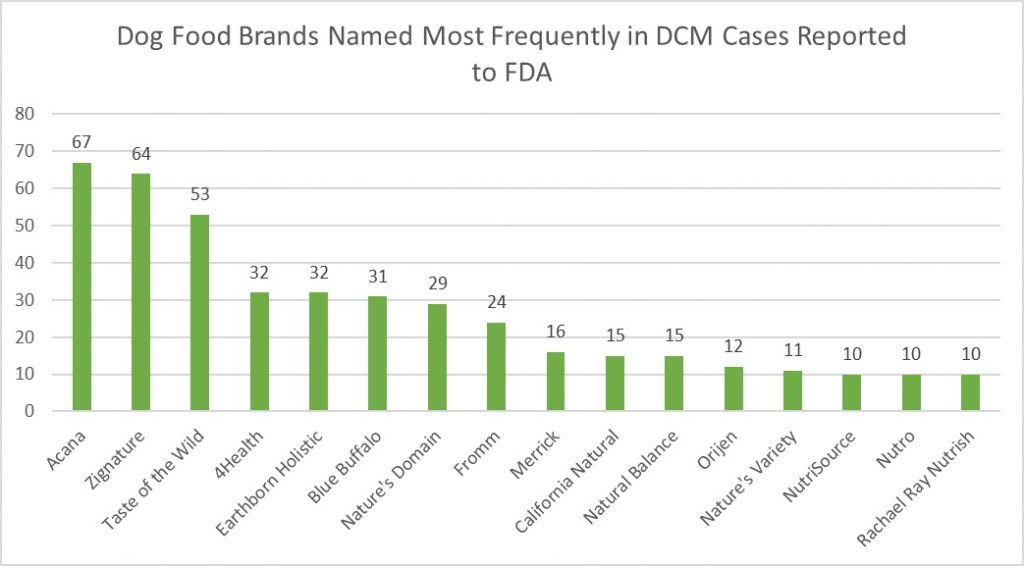Dr. Kimberly Lutz is an associate veterinarian at Craig Road Animal Hospital in north west Las Vegas. Dr. Lutz discusses the best ways to pick a pet food based on the latest information about “Grain-Free” diets from the FDA.
By Kimberly Lutz, DVM
Diet is one of the most effective tools for managing pet health and increasing longevity. Diets can even be used to manage certain disease processes. So how do you pick the right diet given all the options out there? We receive a great deal of questions like these, especially in light the recent Federal Food & Drug Administration (FDA) publications detailing a potential link between BEG (boutique, exotic, grain-free) diets and cardiac disease.
First we need to look for the AAFCO (Association of American Feed Control Officials) nutritional adequacy or assurance statement. AAFCO uses standards developed by nutritionists to ensure allowances for all nutrients. Often times this label is in small print on the sides or back of the bag so it is important to search this out. Here are formats you should look for to ensure complete and balanced diets.
The following information has been taken directly from the AAFCO website:
- 1. “___________ is formulated to meet the nutritional levels established by the AAFCO Dog (or cat) Food Nutrient Profiles for ___________.”
• The first blank must show the product name (the same name on the front of the package).
• The statement says if the product is for cats or dogs.
• The second blank says what life stage the product is for. - 2. “Animal feeding tests using AAFCO procedures substantiate that ______________ provides complete and balanced nutrition for _____________.”
• The first blank must show the product name (the same name on the front of the package).
• The second blank says what life stage the product is for.
• “AAFCO procedures” are standardized feeding protocols that define how feeding trials are to be conducted and assessed. - 3. “_____________ provides complete and balanced nutrition for ___________ and is comparable to a product which has been substantiated using AAFCO feeding tests”
• The first blank must show the product name (the same name on the front of the package).
• The second blank says what life stage the product is for.
• Note that this particular nutritional adequacy statement is not used often. Products justified nutritionally adequate in this way are sometimes referred to as “family products,” meaning the product is similar, but not identical, to one which has been subjected to animal feeding tests. The differences may include minor formulation changes that do not affect the products’ nutritional basis.
The next thing we need to consider is the life stage. Post-weaning puppies would be from ages 6-8 weeks up until 10-12 months. Young adult dogs would be from 1 year to 5-7 years of age. Mature dogs would be from 6-8 years and older. Ensure the food you are feeding is adequate for the life stage. Dog food bags have recommended feeding amounts on the bag. These feeding amounts are typically given for an entire day so if your pet is fed twice daily, you need to split that amount into two equal feedings.
Treats and snacks should be less than 10% of your dog’s daily caloric intake otherwise they will be contributing to weight gain. To put this into perspective, we will provide an example. A 6 year old neutered male 10lb small breed dog gets two treats daily that are both 15 kcal. (30 kcal worth of treats daily). This dog’s daily energy requirement is 330 kcal. If this dog is getting all 330kcal from food then those two treats will contribute to weight gain over time. Yes, it only takes as little as 2 treats to cause weight gain in certain patients. We highly recommend consulting with your veterinarian to determine the appropriate amount of calories for your dog to eat. We can also help you determine the correct amount of treats to incorporate in the diet.
Let’s dive into the recent FDA publications. The FDA recently published its third update on the potential link between BEG diets and Dilated Cardiomyopathy (DCM); a type of cardiac disease). The FDA examined the product labels of the diets reported in DCM cases, finding that more than 90% of the diets were grain-free. The following is a chart from the FDA outlining the food most often implicated in DCM cases.
Dilated Cardiomyopathy is a cardiac condition that causes thinning of heart muscles and enlarged heart chambers. This can lead to fluid backup in the lungs and abdomen. Signs of cardiac disease can include coughing, decreased energy, or difficulty breathing. If you are worried about your pet, they should be seen by a veterinarian. There are certain breed that are genetically predisposed to DCM including Doberman Pinschers, Great Danes, and other large breeds.
A note about grain free diets: Grain free diets have become more mainstream in recent years but very few animals have a true grain allergy. If your pet has a food allergy, it is more often than not the protein source rather than grains. If your pet is suspected to have food allergies, your veterinarian may recommend a food trial or referral to an allergist / dermatologist.
While the FDA is continuing to investigate the link between DCM and BEG diets, we encourage pet owners to be cautious of what you are feeding. Ensure there is an AAFCO nutritional adequacy statement on your bag of food.
Our doctors at Craig Road typically recommend Hill’s Science Diet, Royal Canin, or Purina Pro Plan as there is research substantiating the nutrition in these diets. As always, talk to your veterinarian about the most appropriate diet and nutritional needs for your pet.
For more information visit the following websites:






